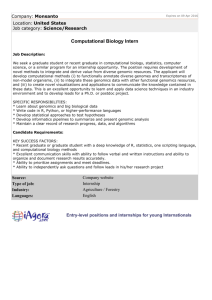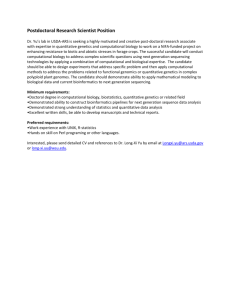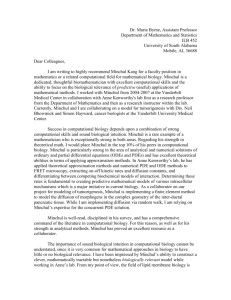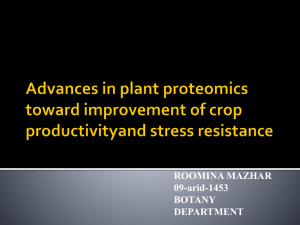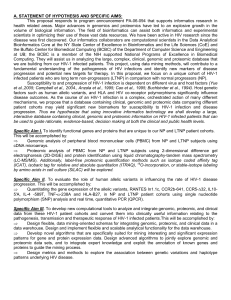NeMo: A network modeling server for biological pathway analysis
advertisement
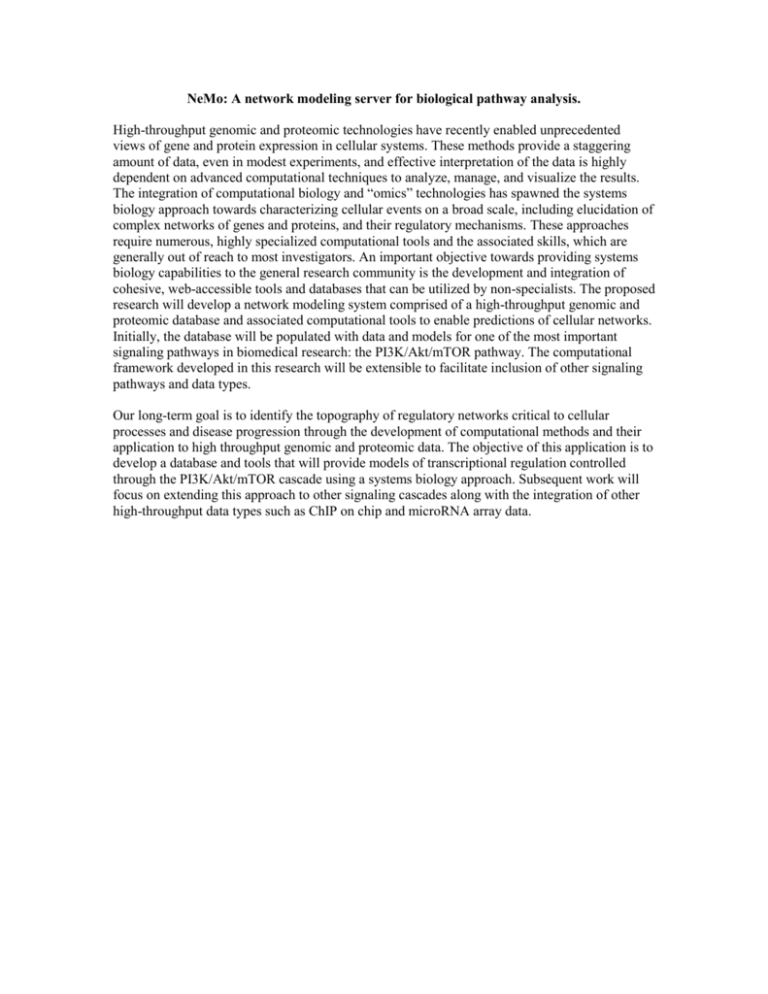
NeMo: A network modeling server for biological pathway analysis. High-throughput genomic and proteomic technologies have recently enabled unprecedented views of gene and protein expression in cellular systems. These methods provide a staggering amount of data, even in modest experiments, and effective interpretation of the data is highly dependent on advanced computational techniques to analyze, manage, and visualize the results. The integration of computational biology and “omics” technologies has spawned the systems biology approach towards characterizing cellular events on a broad scale, including elucidation of complex networks of genes and proteins, and their regulatory mechanisms. These approaches require numerous, highly specialized computational tools and the associated skills, which are generally out of reach to most investigators. An important objective towards providing systems biology capabilities to the general research community is the development and integration of cohesive, web-accessible tools and databases that can be utilized by non-specialists. The proposed research will develop a network modeling system comprised of a high-throughput genomic and proteomic database and associated computational tools to enable predictions of cellular networks. Initially, the database will be populated with data and models for one of the most important signaling pathways in biomedical research: the PI3K/Akt/mTOR pathway. The computational framework developed in this research will be extensible to facilitate inclusion of other signaling pathways and data types. Our long-term goal is to identify the topography of regulatory networks critical to cellular processes and disease progression through the development of computational methods and their application to high throughput genomic and proteomic data. The objective of this application is to develop a database and tools that will provide models of transcriptional regulation controlled through the PI3K/Akt/mTOR cascade using a systems biology approach. Subsequent work will focus on extending this approach to other signaling cascades along with the integration of other high-throughput data types such as ChIP on chip and microRNA array data.

